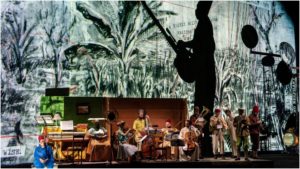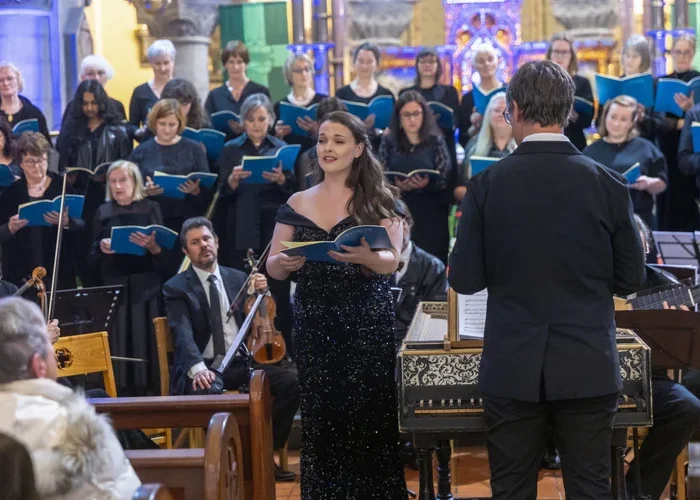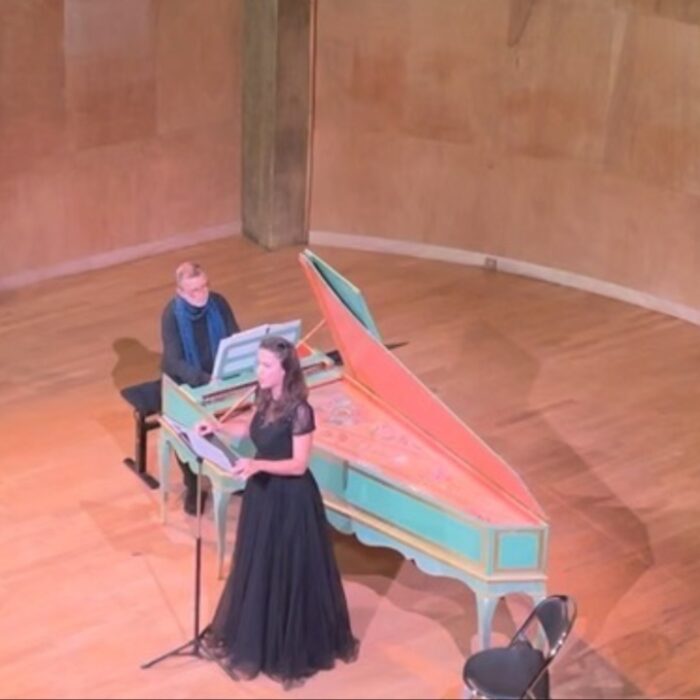
Park Avenue Armory 2018 Review: The Head and The Load
By Xenia HanusiakWilliam Kentridge’s ”The Head and The Load,” currently playing in a two-week season at the Park Avenue Armory, opens with a still portrait.
Three people – two African women and an Italian man frame a stripped upright, teak-colored piano. The man seated on the floor wears a maroon Fez – the headdress of the Turkish military until 1927. The two women are both costumed in complimentary hues of teal and cream. Their hats attract architectural curiosity. The subtle color scheme of the tableau redolent of a Vermeer composition is a poignant alignment of symmetry, asymmetry and light. It is a congruent image of beauty and harmony presaging the aesthetic directives of Kentridge’s multi-media theatrical collage paying homage to the ignored contributions of Africans during the First World War. With his assembly of virtuosic co-creators and artists, Kentridge enlists our sympathies for the fallen African men and women through exquisite and disturbing tableaus of beauty. It is an achievement of a lifetime.
A Visual Symphony
In “The Head and the Load,” the audience is invited to witness a grand procession of song, recitation, dance, image and music, dramatically proportioned on a stage spanning the width of the Amory’s Wade Thompson Drill Hall. The stimulus is obvious. Kentridge theatrically re-imagines the paradoxical and mesmerizing beauty of military parades. We are both shielded and awakened to the factual atrocities of the conscription and subsequent casualties of millions of Africans who served the European nations who colonized their lands. The work’s title, appropriated from the Ghanaian proverb “the head and the load are the trouble of the neck” refers to the role of the African men who served as porters and carriers and the thousands of citizens who were killed. The metaphor also illuminates the heavy burden of colonization on identity, freedom and sovereignty.
The stylistic palette of charcoal hand drawn videos, shadow theater techniques, and parading cut out sculptures will be familiar to audiences who have witnessed Kentridge’s directions of Shostakovich’s “The Nose” and Berg’s “Lulu” at the Metropolitan Opera. In “The Head and the Load,” Kentridge’s illustrious design team of Catherine Meyburg (projections), Greta Goiris (costumes) Sabine Theunissen (set) and Urs Schönebaum (lighting) has delivered a visual symphonic orchestration of stunning vignettes. The magnitude of the proportions and their corresponding complexity never overwhelm our emotional connectivity or interest. While it is unfair to single out any one of these fine contributors, Goiris’s costume design and the technical execution deserve particular mention.
Kentridge’s creative through-line adopts a deliberately non-narrative approach. In his program notes, he poses two questions: “Can one find the truth in thefragmented and the incomplete? Can one think about history as collage, ratherthan narrative? The answer is yes. Kentridge’s presentational tableau style with its inconclusiveness creates a rhetorical dialogue with the audience that is welcomingly neither didactic, nor dogmatic. His textual canvas is a mosaic. Kentridge calls on quotations from Aimé Césaire and Wilfred Owen to extractions from military drills and Kurt Schwitter’s Ursonate – all viscerally delivered in English,French, and German, Zulu, Xhosa, Swazi, and Swahili by the stellar company.
Tonal Cohesion
Composers Philip Miller and Thuthuka Sibisi provide the tonal cohesion for the evening. The extraordinary vision of the cinematically inspired score offers new compositions alongside a mosaic of music redolent of the period. We hear re-imaginings and cultural collisions of Satie, Kreisler, Ravel and Schoenberg with African war chants, folk songs and the English National Anthem. The breathtaking result is shared by the exemplar contributions of the cast of singers and the redoubtable orchestral collective The Knights.
There are numerous tableau that summon distinct attention: from the haunting elegy performed by Guinean singer and kora player N’Faly Kouyaté with the string section from The Knights – a remarkable choral arrangement and rendering of “God Save the Queen,” and Gregory Maqoma’s choreography of the scene of a dying solider and porters. Soprano Ann Masina delivers Satie’s “Je Te Veux” as a love song to her country. Kentridge’s company of virtuosi is alarming.
“The Head and The Load” is a spectacle and a pageant of grand scale, yet its refined execution, inspired imagination and poignant messages reach us with the quiet heart of an intimate chamber music experience.


